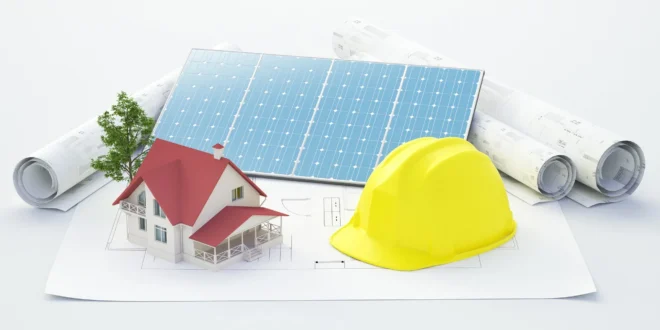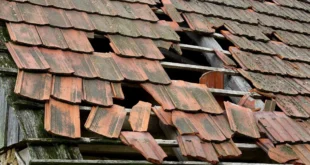Making the shift to an eco-friendly home isn’t just about embracing a trend, it is a commitment to a more sustainable world. It’s all about understanding how even simple, everyday choices can make a big difference.
This guide will show you how to incorporate sustainable materials into your home design. We’ll cover a range of options, from reclaimed wood to recycled metal and beyond. The goal here is to help you create a stylish, comfortable living space that also reduces your environmental footprint.
Let’s dive in and explore the possibilities.
Bamboo Flooring
Bamboo is a great material for flooring because it grows back quickly after being cut down, making it a renewable resource. In fact, bamboo is one of the fastest-growing plants on the planet, with some species growing up to a meter a day!
Plus, bamboo flooring is durable and comes in a variety of styles and colors. It’s a great alternative to traditional hardwood flooring, providing the same warm, natural look without environmental impact.
Cork Tiles
Cork is another excellent choice for flooring. It’s harvested from the bark of cork oak trees without harming the tree, which means it’s a renewable resource. The cork bark regrows within nine years, ready to be harvested again.
Cork tiles are comfortable to walk on, thanks to their natural cushioning properties. They also provide good insulation, helping to keep your home warm in the winter and cool in the summer.
Recycled Carpet
Recycled carpet is made from used carpeting or other waste, reducing the need for new materials. This type of carpet is often just as durable and beautiful as a new carpet, but with a much lower environmental impact.
In addition to being eco-friendly, recycled carpets are also hypoallergenic and resistant to mold and mildew. This makes them a great choice for households with allergy sufferers or in areas with high humidity.
Recycled Glass Countertops
Recycled glass countertops are made from post-consumer glass, like bottles and jars. These countertops are not only eco-friendly but also incredibly beautiful. The glass shards catch the light, creating a unique and eye-catching surface.
These countertops are also non-porous, making them resistant to stains and easy to clean. Plus, they’re highly durable, able to withstand heat and resist scratches.
Paper Composite Counters
Paper composite counters are made from recycled paper and non-petroleum resin. They’re extremely durable and come in a variety of colors, making them a great choice for any home.
These counters are heat and stain-resistant, and unlike stone or concrete counters, they’re warm to the touch. Plus, they have a smooth, matte finish that gives your kitchen a modern and sophisticated look.
Reclaimed Wood Walls
Reclaimed wood is salvaged from old barns or factories, saving it from the landfill. Using this type of wood on your walls can add warmth and character to your space. Each board has its own history, with unique marks and patinas that tell a story.
Not only is reclaimed wood beautiful, but it’s also durable and long-lasting. It’s already stood the test of time, making it a great choice for a feature wall or statement piece in your home.
Recycled Metal Ceiling Tiles
Recycled metal, like aluminum or steel, is another great option for your eco-friendly home. It’s durable, easy to clean, and can give your space a modern edge. Consider using recycled metal tiles on your ceiling for a unique look.
Metal ceiling tiles reflect light, making your room appear brighter and more spacious. They’re also resistant to moisture and mold, making them a great choice for kitchens or bathrooms.
FSC-Certified Wood Furniture
When buying wooden furniture, look for pieces made from FSC-certified wood. This means the wood has been responsibly harvested, so you’re not contributing to deforestation.
Furniture made from FSC-certified wood is not only sustainable but also high-quality. The Forest Stewardship Council (FSC) sets high standards for forestry, ensuring that wood is harvested responsibly, and trees are replanted to replace those cut down.
Recycled Plastic Furniture
Some furniture is made from recycled plastic, which helps reduce waste. This type of furniture is often durable and easy to maintain, making it a great choice for outdoor furniture.
Recycled plastic furniture is resistant to weather, rot, and insects, and it doesn’t require painting or staining. Plus, it’s available in a wide range of colors and styles, so you can find pieces that fit your personal style.
Second-Hand Furniture
Instead of buying new furniture, consider shopping second-hand. Not only can you find unique pieces with history, but you’re also reducing the demand for new materials.
Second-hand furniture often has a charm and character that new furniture lacks. Plus, it’s usually more affordable, making it a great option for budget-conscious homeowners.
Choose Sustainable Fabrics
When selecting fabrics for upholstery, curtains, and linens, opt for sustainable materials made from organic cotton, hemp, or bamboo. These materials are grown without harmful pesticides and chemicals, promoting a healthier indoor environment.
Sustainable fabrics are not only kinder to the environment but also offer comfort, durability, and a wide range of design choices. They provide an eco-conscious and stylish solution to your interior design needs.
Integrate Solar Panels
Consider installing solar panels on your roof to harness solar energy and reduce your dependence on traditional energy sources. Solar power is renewable, clean, and can significantly lower your electricity bills while reducing your carbon footprint.
Solar panels are becoming more affordable and accessible, making them a practical investment for eco-conscious homeowners. If you’re interested in exploring solar energy further, visit this solar hot water systems page to learn about sustainable heating solutions that align with your green energy goals.
Sustainable Materials for an Eco-Friendly Home Design
Designing a sustainable home isn’t a daunting task. It’s about making smart choices with materials and appliances.
With these sustainable materials, you can begin crafting your eco-friendly home today. It’s a wonderful way to combine style, comfort, and care for our planet. Remember, each step towards an eco-friendly home is a step towards a sustainable future. Have fun designing and making a positive impact!
We have plenty of informative articles available to you throughout our site. Check them out!
 SlushWeb Bringing Facts to Light
SlushWeb Bringing Facts to Light



